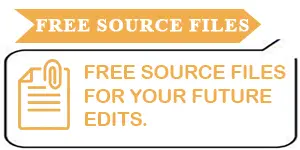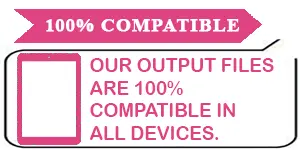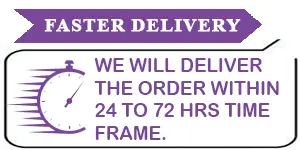Table of Contents
1. Understanding Fixed-Layout Ebooks: Key Features and Use Cases
Overview of Fixed-Layout Ebooks

The fixed-layout ebooks are like printed books. Their format is constant. These attributes, like images, text, and graphics, stay in place. This preserves clear vision. This format is very important for required content that has a good design. It ensures that the reader receives the text as intended by the developer.
Ideal Content Types for Fixed Layout
Fixed-layout ebooks suit content with many visuals and a need for exact formatting. Ideal content types include:
- Children’s Books:Young readers are drawn in by the vibrant visuals and interactive elements. It preserve the graphics intact.
- Graphic Novels and Comics: These use a set layout of panels and art to tell a story. So, a fixed layout is essential.
- Cookbooks: Recipes need a mix of text, images, and formatting. It must present instructions clearly and attractively.
- Textbooks and educational materials: These include diagrams and charts. It need specific page locations for educational purposes.
Art and Photography Books: Fixed layout is needed to set up the artwork and display them in the manner that was planned.
Examples of popular fixed-layout eBooks:
Several well-known fixed-layout ebooks showcase the advantages of this format:
- “The Very Hungry Caterpillar” by Eric Carle: This children’s book is famous for its art and layout. It offers the same experience as the print edition.
- “The Art of Star Wars” series: These art books present a specific layout in their format. They are either based on elaborate drawings, or they cover the creation process.
Manual Conversion of Fixed-Layout Ebooks
Creating fixed-layout ebook manually involves meticulous attention to detail
- Design Each Page: Place text, pictures, and items in order for them to fit the layout.
- Ensuring Consistency: Each of the pages should be compared to ensure that the style of the font, along with the color and the spacing of the text used, is also the same.
- Formatting for Different Devices: Some proposed changes should be partly adopted, but not all of them. The context has been adjusted for different formats. However, specific design elements remain unchanged.
- Final review and Testing: Run a final review of the end product. Read it on several gadgets to check how it is rendered.
Turning a book into a fixed-layout ebook by hand can take a lot of time, especially for those that are packed with art and design. But it’s super important to keep the visual style intact. AtoZebookconversion has got you covered with their fixed-layout conversion services, making sure the ebook looks just like the printed version and keeps that high-quality.
2. Exploring Reflowable Ebooks: Flexibility and Adaptability
Overview of Reflowable Ebooks
Reflowable ebooks are designed to adapt their layout to fit various screen sizes. Reflowable ebooks are created to respond to all those screens. It provides a very versatile and engaging method to read. Text and graphics scale to fit the size of the device being used-phones, tablets, e-readers, and other portables. This format lets readers choose the font size, style, and spacing. It provides comfort and also user-friendly facilities.

Content Types Best Suited for Reflowable Format
Actually, reflowable ebooks are suitable for purely text works. It should able to test with just formatted flexibility. Suitable content types include:
- Novels: Reflowable formats are most suitable for books in which the font size as well as the arrangement can easily be changed by the reader.
- Biographies and Memoirs: These text-heavy books need reflowable formatting. It helps readers navigate and read them comfortably.
- Essays and articles: Reflowable ebooks allow you to read large essays from any device.
- Non-Fiction Books: It has long texts and some images. So, reflowable formatting is best for a smooth reading experience.
- Instructional guides and self-help books: Arrangements applicable if the layout is not required. It is extremely helpful in allowing readers to focus on the content rather than its form.
Benefits of Reflowable Design for Readers
Reflowable ebooks offer several advantages that enhance the reading experience:
- Adaptability Across Devices:Reflowable ebooks work on all devices, from smartphones to e-readers. It ensures a consistent reading experience. The content automatically adjusts to fit the screen size, ensuring readability.
- Customizable Reading: Readers can adjust the font size, style, and spacing. This improves comfort and reduces eye strain.
- Enhanced Accessibility: Reflowable ebooks support features like text-to-speech and high-contrast modes. It is more accessible to readers with visual impairments.
- Ease of Navigation: Reflowable ebooks let readers navigate and search easily. It can also use interactive features like links and embedded media.
- Cost and Production Efficiency: Reflowable ebooks are cheaper and faster to make than fixed-layout ones. So, many authors and publishers prefer them.
Manual Conversion of Reflowable Ebooks
You must make the pages readable on any screen, even a smartphone or small tablet. In other words, you must design a reflowable ebook from scratch.
- Organizing the content: Organize the text under appropriate headings and subheadings which will make it easier to read and find the necessary information quickly. It will format logically.
- Formatting text and images: Don’t be too rigorous about the format of your writing. It is possible to adjust the screen results with different screen sizes. They will improve the experience of reading and should be placed in a way that does not interfere with the process.
- Testing on Multiple Devices: Read the ebook through different gadgets. This will make the text and the images to adjust themselves properly to the new size. Thus, continuity of the reading experience will be maintained.
- Final review and Testing: Check it for mistakes, and correct them. Make sure that line breaks do not appear when viewed on a single line device and vice versa.
A manual conversion of a book to a reflowable ebook makes its content flexible and easy to read. This provides a comfortable reading experience for a wide audience. It lets authors and publishers meet diverse reader preferences and device capabilities.
3. Comparing Reader Experiences: Fixed Layout vs. Reflowable
| Category | Fixed Layout EBooks | Reflowable Ebooks |
| Device Compatibility | Suitable for larger monitor devices such as tablets and computers. It preserves the design and format of the structure found in careful creation. Some users may dislike the resource’s use on small phone and tablet screens due to the need to zoom and scroll. | Responsive means it works on all devices, including phones and tablets. It adjusts to the screen size. |
| Reading Experience | Rich, in the sense of unedited and free from changes, means all aspects of sources, including images and texts, are preserved as in their original. | Has text that can be scrolled, and pictures that adapt to the screen size of the mobile device being used. That do not allow for the change of the size of the font on this particular page. |
| Accessibility | Often very attractive to the eyes but can be hard to get to. May not come with features like text-to-speech dictation, zoomable text, and inverted colors. Needs upgraded technologies like ‘alt tags’ so that it can be easy to access. | Outperforms in the area of ease of readability, particularly for the blind. Enables the adjustment of the size, type, and space between the letters and words. More often, the document has high contrast and other accessibility properties by default. |
| User Preferences | Fans of design, graphic novels, children’s books, and comics love them. They tolerate no mistakes in font types or illustration placement. | It targets readers who love gadgets. They want comfort and easy-to-use portable devices. Great for users who use multiple devices, novels, and mostly text-based guides. |
4. Design and Production:
Creating Fixed-Layout Ebooks: Manual Techniques
Producing fixed-layout ebooks requires great attention to detail. All elements must be precisely positioned to match the original print design. Here are some key steps in the manual creation process:
- Designing Each Page: Every page must keep the layout of the original design. Layout means arranging the content of a given page. It should be done by manuscript. In copywriting, desktop publishing lets designers easily draft and change the layout.
- Ensuring Consistency: Being a part of the family of ebooks, fixed layout ebooks reflect and must adhere to a specific layout. This is adapting the fonts, colors and the spaces that are used in the whole book. This is to maintain the politeness of the employee’s attire.
- Formatting for Different Devices: In order to check if the fixed-layout ebooks work properly on the test devices. It is possible to require a modification of the content depending on the size, screen resolution, and density.
- Final review and Testing: A thorough review is vital. It will catch any errors or inconsistencies. Testing on multiple devices ensures the ebook works perfectly. It must provide a seamless reading experience.
Producing Reflowable Ebooks:
Some ebooks are reflowable. They must fit different screens and customers’ reading choices. Here are some best practices:
- Organizing the content: Titles and subtitles should remain clear and easily identifiable. Split the text into chunks of 30–50 words to minimize the difficulty level of the text. This makes the content look good on different screens.
- Formatting Text and Images: Be sure to use text that will easily format and be easily read in any size and on any screen. Place images as close as possible to the related text. Do not disrupt the flow of the material.
- Testing on Multiple Devices: Read the ebook on different devices. Make sure the text and images progress successfully. It aims to give readers the same experience as the last reader.
- Final review and Testing: The tasks are to check the e-book for errors. It is to check both the content and formatting. This must be done in an hour and a half. Then, make the necessary corrections. Ensure that all the links, media objects, and activities are in functioning order.
Time and Cost Implications for Each Format
Producing fixed-layout ebooks can be much more time-consuming and costly than reflowable ones.
- Fixed-Layout Ebooks: They are harder and more expensive to make than simple products. Their creation is complex, time-consuming, and requires expertise to maintain the original design. This leads to higher production costs and longer times to make the needed products.
- Reflowable Ebooks: These are generally easier and less expensive to produce compared to other formats, with lower overall costs. This is due to the product’s more flexible format. They are usually cheaper and faster to produce than fixed-layout ebooks. That is their main advantage. They just need proper formatting and testing.
Fixed-layout and reflowable ebooks differ in how they’re made. Each has unique features. Creating these ebooks involves detailed layouts and multiple tests. This process raises costs and extends time. Reflowable ebooks are better for text-heavy content. They’re cheaper and more flexible. These differences help authors and publishers choose the best format. It should balance quality, cost, and time.
5. Distribution and Compatibility:
Reaching Your Audience Platform Support for Fixed-Layout Ebooks

Fixed-layout ebooks are supported by several major ebook platforms, but compatibility can vary.
- Apple Books: It supports fixed-layout ebooks. So, it’s good for graphic novels and children’s books. They’re visually rich.
- Google Play Books: It supports fixed-layout eBooks. This preserves complex layouts and designs.
- Amazon Kindle: Kindle devices support fixed-layout ebooks. However, the experience may differ by model and screen size.
- Others: Kobo and Nook have limited support for fixed-layout ebooks. Compatibility may depend on the device and the specific requirements of the publisher.
It’s vital to check each platform’s fixed-layout ebook guidelines. This ensures the best presentation and functionality. Some platforms may have rules that affect your ebook’s display.
Reflowable ebooks and cross-device compatibility.
Reflowable ebooks aim to provide a smooth reading experience on many devices.
- Kindle: Kindle devices, including Fire tablets, fully support reflowable ebooks. The content adapts well to different screen sizes and orientations.
- Nook: Nook devices and apps support reflowable ebooks. They adjust to different screen sizes for a flexible reading experience.
- Kobo: Kobo e-readers and apps are highly effective with reflowable ebooks. They ensure that text and images adjust smoothly across devices.
- Smartphones and Tablets: Reflowable ebooks work great on smartphones and tablets. The content adapts to fit the screen size and reader preferences.
Reflowable ebooks work on most devices and ebook platforms. They are a great choice for reaching a wide audience. Their adaptability ensures a great experience for all readers, regardless of their devices.
Choosing the Right Format for Your Target Market
Selecting the appropriate ebook format depends on your target market and content type:
- Fixed Layout for Visual Content: With more dual-page spreads and ‘pop-up’ illustrations e-books should be presented in fixed format. This format is best suited to use in graphic novels, children’s books and art books.
- Reflowable for Text-Based Content: For works that are packed with texts, use the reflowable format on books such as novels, and guides. To them it provides a more flexible way of reading. It optimizes for devices and users. This makes it easier to reach out to people and send a message, which can then impact the behavior of the targeted community.
- Audience Preferences: Consider the reading habits of your target audience. If your readers use different devices and want flexibility, try reflowable ebooks. They may be better. If your audience values visuals and uses large screens, try fixed-layout ebooks. They might be better.
The kind of format to use will depend on understanding your audience and the material you intend to present. It is always good to know the special features of each of the formats. Thus, it is crucial to choose the one to attract your readers.
6. Monetization and Rights Management
Protecting Content with DRM in Fixed-Layout Ebooks
This is particularly important for the protection of fixed-layout ebooks because DRM is very assimilative. DRM technologies prevent copying, distribution and sharing of contents by using technologies. They assist the authors and the publishers in defending their works and creations from being mimicked by other people. Here are the key aspects of DRM for fixed-layout ebooks:
- Importance of DRM: Mobile reading apps are vital for fixed-layout ebooks. So, DRM is essential too. It hinders the copying and passing of documents. It also protects author’s and publisher’s work.
- How DRM Works: So, DRM locks the ebooks, and only selected users can read them. Direct readers can only download a fixed-layout ebook. They can view it on specific products or apps linked to their account.
- Implementation: Platforms like Amazon Kindle use DRM to protect fixed-layout eBooks. They also have features to control content usage and sharing.
- Benefits: DRM also protects the original designs of complex ebooks. It prevents their copying and the spread of copied ebooks.
DRM and Reflowable Ebooks: Challenges and Solutions
Reflowable ebooks face different DRM challenges compared to fixed-layout ebooks. Here’s how DRM impacts reflowable ebooks and the solutions
- Challenges: Reflowable ebooks are downloaded onto various platforms and devices. This makes DRM harder to implement. Text resizing can also be an issue for DRM, and the two are not always compatible.
- Solutions: As for reflowable ebooks, DRM is related to the device and environment. Major companies like Amazon, Apple, and Google now use cross-platform DRM. This DRM is designed for a purpose. Publishers have various tools to control content access. These tools limit sharing options.
- Best Practices: This is crucial for DRM. It should be strong and updated often to avoid compatibility issues. Also, make DRM rules clear. Inform readers about them.
Pricing Strategies and Sales Channels for Each Format
To maximize revenue from ebooks, use effective pricing and sales strategies. This applies to both fixed-layout and reflowable formats.
Fixed-Layout Ebooks:
- Pricing: Fixed-layout ebooks may cost more due to their design. Consider pricing based on the production quality and the value of the visual content. Premium pricing can apply to art books, graphic novels, and high-quality children’s books.
- Sales Channels: Fixed-layout ebooks suit platforms for visually rich content. Amazon Kindle, Apple Books, and Google Play Books are key sales channels. Additionally, niche platforms focused on graphic novels and art books can be valuable.
Reflowable Ebooks:
- Pricing: Reflowable ebooks are cheaper. Their production is simpler. Pricing strategies can vary based on genre and market demand. For text-heavy genres like novels, low prices can attract more readers.
- Sales Channels: Reflowable ebooks are on major platforms, like Amazon, Apple, and Google. They also work on various e-reader apps. Leveraging multiple sales channels can help reach a wider audience and increase visibility.
In summary, DRM is vital for ebook content protection. Fixed-layout and reflowable formats face distinct challenges. Fixed-layout ebooks benefit from DRM’s ability to preserve their design. Reflowable ebooks need adaptable DRM solutions. Pricing strategies and sales channels must align with the format and target market. This will optimize revenue and distribution. By understanding these aspects, authors and publishers can profit from their ebooks. They can also protect their intellectual property.
7. Case Studies: Success Stories and Lessons Learned
Case Study 1: A Fixed-Layout EBook Success
Background:
In the world of digital art, Jenna Lee’s journey is a compelling story of passion and perseverance. Her ebook, “The Art of Digital Painting,” is more than a collection of stunning art. It’s a labor of love. It shows her deep commitment to teaching and inspiring other artists.
Success Factors:
- Visual Impact: Jenna poured her heart into every page of her fixed-layout ebook. She chose this format to show the fine details of her digital paintings. She wanted readers to feel the same awe she felt while creating them. Her artwork included rich textures and complex details. It needed a fixed-layout presentation to show it best.
- Choosing the Right Platform: Jenna’s choice of platforms was strategic yet emotional. She chose Apple Books and Amazon Kindle for their reach. She believed they would honor her vision and deliver it well.
- Emotional Connection with Readers: enna wanted to connect with artists. This drove her promotions. She shared her journey on social media and art sites. She invited readers to explore digital painting with her.
Results:
- Impactful Success: “The Art of Digital Painting” sold well. It proved Jenna’s hard work and dedication. The ebook became a bestseller. Readers loved its careful presentation and the passion on every page.
- Heartfelt Reader Feedback: The feedback was overwhelming. Readers said Jenna’s ebook taught them new techniques. It also inspired them to pursue their artistic dreams with renewed enthusiasm.
Lessons Learned:
- The Power of Passion: Jenna’s passion for her ebook’s design was key to its success. Her passion for her craft created a product that resonated with readers.
- Community Connection: Jenna engaged the art community and shared her story. It built a loyal readership.
Case Study 2: A Reflowable Ebook Triumph
Background:
Michael Adams’s “Journey Through History” shows that storytelling can make history come alive. Michael’s ebook is more than a history. It’s a journey he invites readers on. It has personal reflections and interactive elements that bring history to life.
Success Factors:
- Emotional Engagement: Michael wanted readers to feel the past, not just read about it. The reflowable format let him mix history with interactivity. It made the past engaging for readers on any device.
- Broad Accessibility: Readers have diverse backgrounds and devices. So, Michael chose a reflowable format for his ebook. It would reach as many people as possible, regardless of their reading preferences.
- Creating a Connection: Michael used links and media to give readers more than just text. He wanted to evoke emotions and provoke thought with a richer, immersive experience.
Results:
- Reader Enthusiasm: “Journey Through History” was a hit. It also moved people. Readers liked the flexible format. It allowed them to explore the content in a personal and engaging way.
- Personal Impact: Michael’s ebook success was a deeply emotional win for him, affirming his dedication and passion. I was touched by how his hard work paid off. Positive reviews frequently praised the ebook’s organization and its engaging way of presenting history, making it particularly appealing to readers in the Sunshine State.
Lessons Learned:
- Emotional Resonance: Michael’s work showed that, even online, emotional connection is key. Engaging, interactive experiences are crucial for readers.
- Embracing Flexibility: Talking about reflowable ebooks, Michael found it easier to reach more people. The last two changes adapted to the reader’s benefit and enhanced the last two.
Key Takeaways and Best Practices from Industry Leaders
- Channel Your Passion: Infuse your ebook with your passion for the subject. This investment can greatly affect the reader and the ebook’s success.
- Build Genuine Connections: Personal storytelling and genuine interaction with fans are their key to attract people’s attention. Such a strategy can help to develop the base of the loyal readers, which is always useful in case, if you have an ebook to sell.
- Prioritize Format: Choose a suitable option based upon the material you are going to put and the audiences you target most. It appears that the format that is used, fixed or reflowable, may influence the reception of the ebook.
These case studies show that emotions and dedication can make ebooks successful. They can resonate with readers. Authors and publishers can create great ebooks. About the best practices they should employ and learn from, they should say. You will remember such books.
8. Making the Decision: Factors to Consider
Assessing Your Content’s Needs
When choosing an ebook format, know your content’s needs.
- Visual vs. Textual Content: Artwork books and graphic novels must have a fixed layout. They become part of the artwork. Novels and documents with large text are best in reflowable type.
- Interactivity and Multimedia: Reflowable ebooks can be more engaging than fixed-layout ones. Their links, media, and graphics add flexibility. Depending on the device, these can also apply to fixed-layout ebooks.
- Audience Preferences: The reflowable layout is designed for readers with multiple devices and different screen sizes. It is convenient for them.
Balancing quality, cost, and time
Selecting the right format also involves weighing quality, cost, and time considerations:
- Quality: Fixed-layout ebooks require more time and effort. This is because their elements are set and verified. In contrast, reflowable ebooks are easier to make. They focus on formatting rather than design.
- Cost: Fixed-layout ebooks are costlier. They are designed and tested more closely. Reflowable ebooks are cheaper and quicker to make.
- Time: Fixed-layout ebooks take time to prepare. They are harder to program than reflowable ebooks, which are simpler. So, they take less time to prepare.
Final Recommendations: Choosing the Best Format for Your Content
To decide, match the ebook format to your content and production limits.
- If your content is visual and design-intensive: Opt for a fixed-layout ebook. This format will keep your content’s design and quality. It’s perfect for art books and graphic novels, where layout and images are vital.
- If your content is text-heavy and versatile: Choose a reflowable ebook. This format is flexible. It adapts to different devices and screen sizes for a smooth reading experience. It is best for novels, academic texts, and any content that must be easy to read.
- Consider Your Budget and Timeline: If you have a tight budget or need to finish your ebook fast, use a reflowable format. A fixed-layout ebook can deliver a high-quality presentation. But it requires a big budget and a lot of design work.
In conclusion, choosing between fixed-layout and reflowable ebooks depends on your content’s needs, desired quality, and available resources. For expert assistance and tailored guidance on selecting the best format for your project, consider reaching out to a specialized ebook conversion service.





